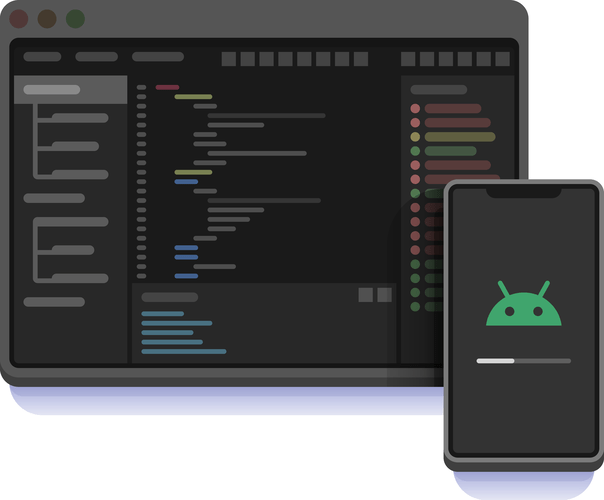Content
All eyes fall on David while he is doing his part, as his testing can reveal serious issues that would delay the release. A practical guide to the continuous integration/continuous delivery (CI/CD) pipeline. Difficulty with scaling CI/CD infrastructure or reusing existing configuration creates friction, which stifles development. Today’s cloud infrastructure is best utilized by writing software as a composition of microservices, which calls for frequent initiation of new CI/CD pipelines. This is solved by having a programmable CI/CD tool that fits in the existing development workflows and storing all CI/CD configuration as code that can be reviewed, versioned, and restored.
This was necessary because, in non-DevOps setups, devs are often unaware of QA and Ops roadblocks ( “It works fine on my machine”). Moreover, QAs and Ops personnel often lack context on the business requirement of any software since they work across multiple projects. Teams create solutions together and are, ci/cd pipeline monitoring for the most part, cross-functional. For example, testers are just as involved from the beginning as developers. Additionally, each development sprint takes user feedback into account. The point of CI is to establish a software-defined lifecycle that decreases the effort required for build and integration.
Jira Service Management
While the cloud can certainly help with all these requirements, there is a certain level of discipline required in the software team in order to truly embrace Continuous Delivery. Continuous Delivery is the practice of packaging and preparing https://globalcloudteam.com/ the software as frequently as possible. And the most extreme way to deliver is after EVERY feature merge. If we alleviate the pain of the “integration” phase by doing it more often, we can also do the same thing for the “delivery” phase.

While both concepts overlap considerably, differences exist among them in terms of scope, purpose, process, implementation, stages, and benefits. Though CI and CD do refer to different stages in your release process, both allow you to see value faster. Continuous deliveryis an extension of continuous integration since it automatically deploys all code changes to a testing and/or production environment after the build stage. Through continuous integration, developers can solve problems they face when writing, integrating, testing and delivering software applications to end-users. When selecting CI/CD tools, the focus should be on how to optimize and automate the software development process. An effective CI/CD pipeline uses open-source tools for integration, testing and deployment.
Production-safe DAST: Your secret weapon against threat actors
Now, let’s understand DevOps vs CI/CD by knowing how DevOps practices can be achieved using CI/CD tools. This is a simple example of how to create a basic CI/CD pipeline using popular tools. Depending on your organization’s needs and infrastructure, you might want to use other tools or add more steps to the pipeline. Implementing the right tools at the right time reduces overall DevSecOps friction, increases release velocity, and improves quality and efficiency.
- CD is about the processes that have to happen after code is integrated for app changes to be delivered to users.
- It mainly focuses on automating the software build and deployment process, by integrating and testing code changes frequently and deploying the code changes automatically to different environments.
- Learn how to integrate PagerDuty incident management tool with Harness to get a clear view of your CI/CD pipeline events.
- CI/CDDevOpsDevelopers who adopt continuous integration methodologies merge their changes with the main application as frequently as possible.
- Release candidates that don’t reach production are still stored as an artifact if they need to be recalled in the future.
One of the hardest stages to automate is the verification of deployments. When running a normal test, the results are binary – either it is a passed test or a failed test. Validating if a deployed application is successful or not can bring in a host of concerns and areas to check. Especially when implementing a canary release strategy with several incremental deployments, this validation can keep occurring, and should, even post-deployment. Correlating data/key metrics from different monitoring, observability, and performance management solutions can be tedious – especially when trying to determine a baseline.
Jira Software
CD helps your business team to deliver updates to clients immediately and frequently. CD practices increase productivity by freeing developers from manual work and complex dependencies. DevOps and CI/CD are the most valuable and productive software development methods. When implemented accurately, they become instrumental in creating software that meets user expectations every single time. Additionally, BrowserStack offers integrations with all major CI/CD tools, thus simplifying testing protocols for QAs and developers. Agile is an extensive framework that encompasses the other two practices.

This can make the live environment less stable, which doesn’t align with every deployment strategy. Most organizations aim for Continuous Delivery and reserve Continuous Deployment for specific applications, if they use it at all. Continuous deployment goes one step further than continuous delivery. With this practice, every change that passes all stages of your production pipeline is released to your customers. There’s no human intervention, and only a failed test will prevent a new change to be deployed to production. CI/CD and Agile are not the same, but they are often used together.
Continuous Delivery Best Practices
Diving into the difference between CI and CD is imperative to understand better what it means. Kostis Kapelonis Kostis Kapelonis is a developer advocate at Codefresh, a continuous delivery platform build for Kubernetes and containers. Formerly a Software Engineer, Kostis has years of experience containerizing applications, building CI/CD pipelines, and developing Java applications. Through CI/CD — and the automated testing processes involved — companies can build a robust, responsive pipeline to support large volumes of changes. These fast-paced changes are pushed through a series of controls and quality gates to maintain stability and scalability, thereby enforcing product quality. CI improves collaboration throughout the development process, while CD uses automation to streamline testing, staging, and validation so code is deployable at the push of a button.

Simply put, CI is the process of integrating code into a mainline code base. In almost all scenarios today, CI is done using platforms designed specifically for the purpose. Implementing CI is, therefore, as simple as using the right tools. CI/CD and test automation processes are considered DevOps best practices.
What Is Continuous Delivery?
And then there is the testing phase when he is swamped with work and must deal with unexpected testing scenarios and everybody looking over his shoulder. Finally, testing is finished, and Elizabeth happily announces that the release is ready to be packaged and shipped to customers. Setting up a CI server such as Jenkins or Bamboo to integrate code changes continuously does not mean you are doing CD. The DevOps process is an iterative cycle that relies upon a fast feedback loop.

